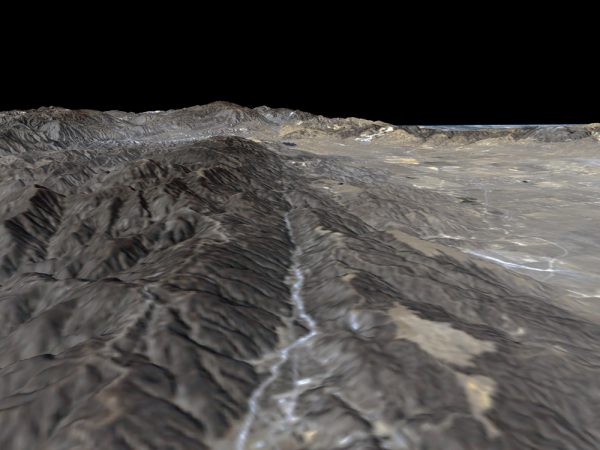Twist and shake
A new look at the shape of the San Andreas Fault suggests future earthquakes may be stronger than previously thought

California, best known for bright beaches and movie stars, is a state divided. Its dividing line, called the San Andreas Fault, runs almost the entire length of the state. (Contrary to popular belief, the land west of this near-coastal fault will not soon slide into the ocean.) Along the fault, two giant plates of Earth’s crust meet. They creep past each other slowly, at about the same speed that fingernails grow. But sometimes they slip faster — releasing enormous amounts of energy and causing destructive earthquakes.
In a recent study of the San Andreas Fault, scientists report that the fault tilts and dips dramatically in some places. And this twisting shape may cause stronger earthquakes than had been previously expected.
“We now have a picture of a propeller-shaped San Andreas,” Gary Fuis told Science News. Fuis, a geophysicist at the U.S. Geological Survey in Menlo Park,Calif., worked on the new study. Geophysicists study the energy, matter and motion involved in natural phenomena on Earth.
Earth’s crust is not one solid piece of rock. Instead, it contains a large number of tectonic plates — vast, solid portions of Earth’s surface that slowly move. The San Andreas Fault formed when two plates touched, probably about 15 million to 20 million years ago. One plate supports most of North America; the other lies under much of the Pacific Ocean. Scientists have been studying this famous fault for more than 100 years.
Fuis and his colleagues didn’t go digging into the fault. Instead, they collected information using different tools. They studied variations in gravity’s tug along the fault. They also studied seismic waves, or energy, released from small earthquakes and explosions. Finally, they looked at patterns in magnetic rocks near the fault. Using computer programs, they found that only a twisting fault could produce those patterns.
An earthquake that shakes one of these tilted areas may be stronger on one side of the fault than the other. If the fault cuts under one side at an angle, cities on that side will feel a stronger quake because they’re closer to the fault itself. In addition, a tilted boundary between two plates is longer than a vertical one, which means more energy may be released when they slip past each other.
“The dipping geometry may allow for significantly larger earthquakes,” Roland Burgmann told Science News. Burgmann, a geophysicist at the University of California,Berkeley, did not work on the new study.
Get ready,California. The “big one” — a giant future earthquake predicted by scientists and feared by Golden State residents — may prove an even bigger whopper than people had been expecting.
POWER WORDS (adapted from the New Oxford American Dictionary)
seismic Relating to earthquakes or other vibrations of the Earth that send waves of energy through the crust.
geophysics The study of physics of the earth.
fault An extended break in a body of rock, often identified by the different rocks on either side of the break.
plate One of the several rigid pieces of Earth’s crust that together make up the Earth’s surface.







